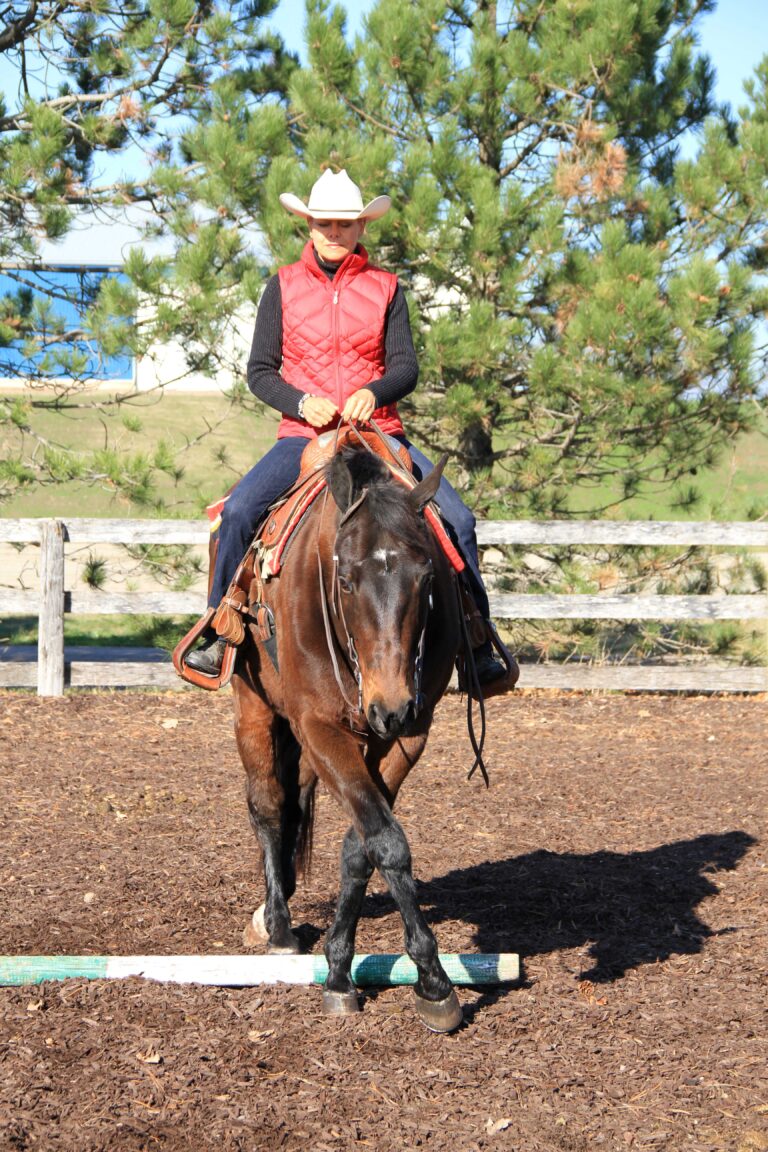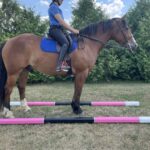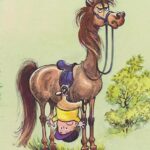
Navigating obstacles – more merits of focusing on your horse’s footwork
Are you prepared for the obstacle exam?
The test of adding wood to your training program assesses the skills you already have in place and may surface some missing links. Before maneuvering through ground rails, make sure you have:
Patience. Obstacles, step-by-step, may not appeal to thrill seekers. Riders tend to find “maneuvering obstacles” boring. They require slow training; patience and pausing between steps. Consequently, many riders just don’t practice them (until they get to the horse shows)!
Before you enter an obstacle, how would you rate your own patience? Emotions can muddle the clarity of our aids or magnify them like a megaphone. A rider’s emotion stirs up her horse’s emotions.
Have you trained your horse to be patient? To wait well? Do you have control of his feet? The trained ability to manipulate his steps?
Horses are inclined to want to get maneuvering obstacles over with. Not because they’re boring, but because they’re scary. Behaviours learned in the presence fear are not soon forgotten.
Keep your own emotional temperature cool. If a horse rushes out the backing corridor, resist the impulse to kick him back in. Don’t ever let your horse associate tension with an obstacle. I do plenty of standing horses in, over and beside obstacles, convincing them that this is a happy place to be.
A neutral gear. Wait between each step until your horse is completely neutral and not anticipating what comes next. Pause and give him a chance to process each cue. Gradually, you can shorten the wait time until it’s no longer visible – the steps become steady, but the pause is still understood. For me, the key to backing and side pass obstacles is that the horse never initiates a step but instead, waits to be asked.
The methodical method, albeit tedious to many riders, is how we avoid creating a horse that performs the side pass on auto pilot….or backs through the corridor on his own. If you try to interrupt a trick-trained horse, it’ll upset his applecart.
Control of the horse’s feet. Have your rein back and side pass well established before you involve poles. Don’t think of backing through or sidestepping across the obstacle as a whole, but as a sum of the multiple pieces involved. Before my students approach any obstacle, we have these five pieces firmly in place: Turn on the forehand and haunches, side pass, step backward and step forward. These are your tools to persuade your horse’s feet to go where his preference tells him not to.
With these 3 items in hand, you’re ready to enter the obstacle challenge.
The rest of my article – the how-to of side pass and backing obstacles – can be found on Canadian Horse Journal’s web site.

